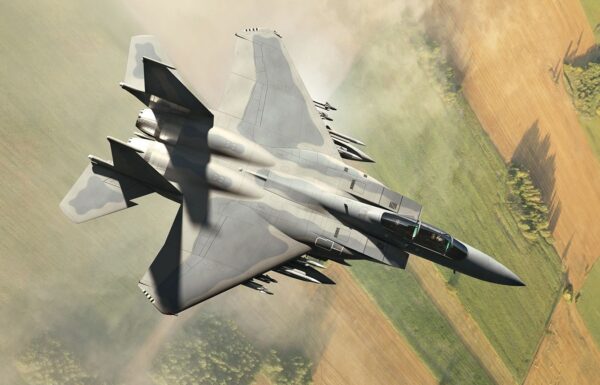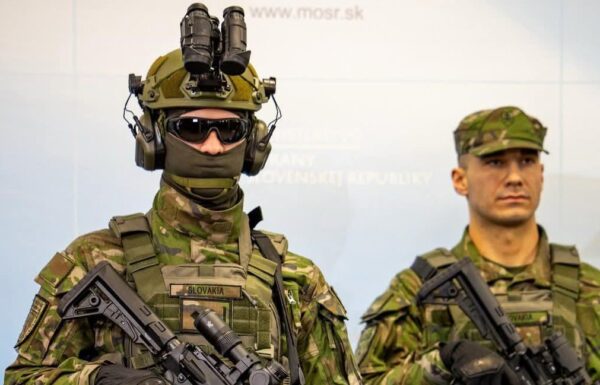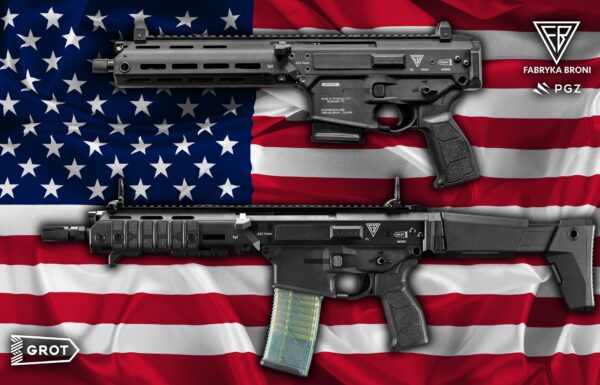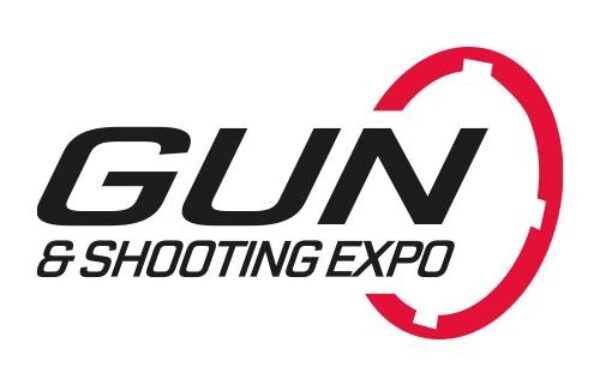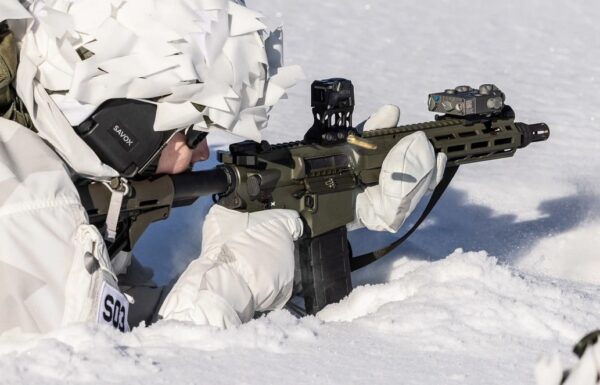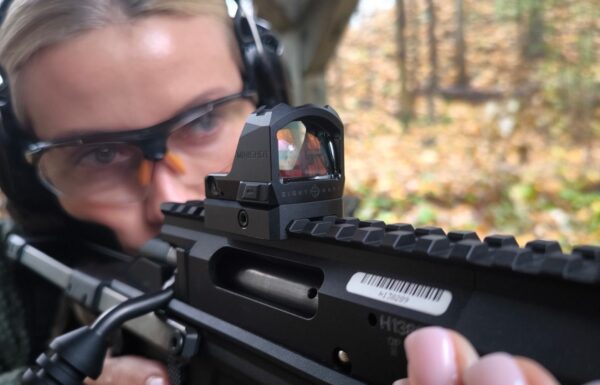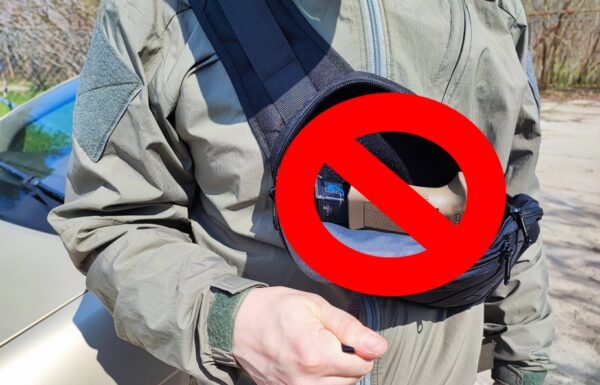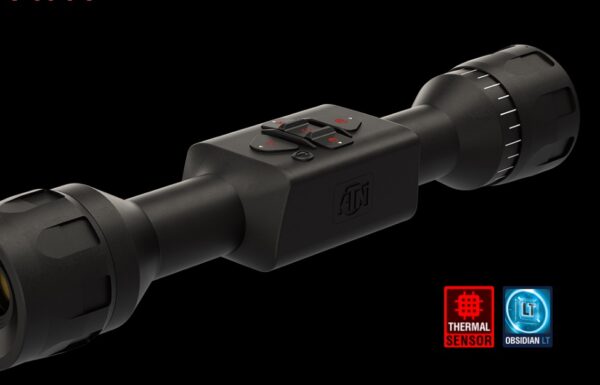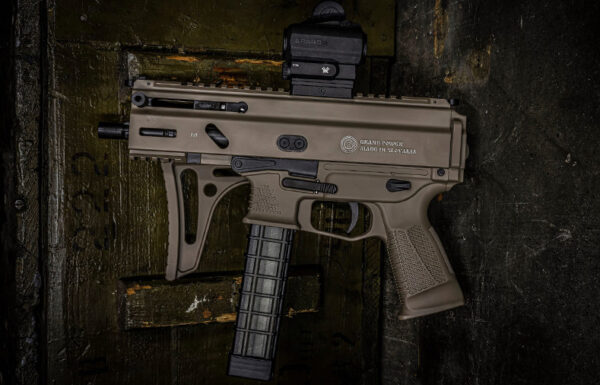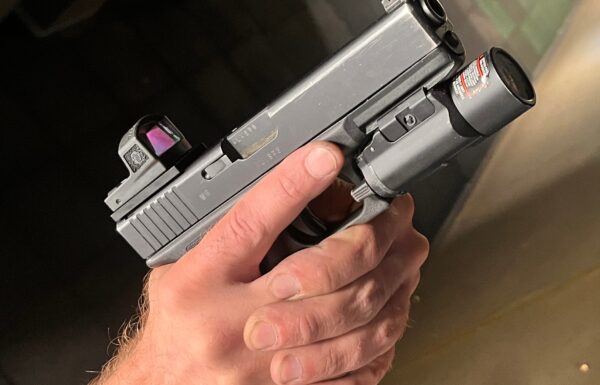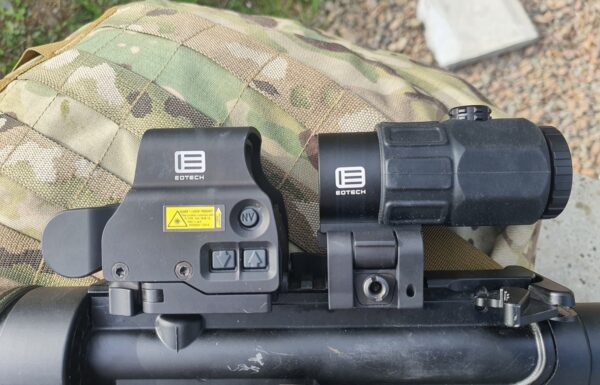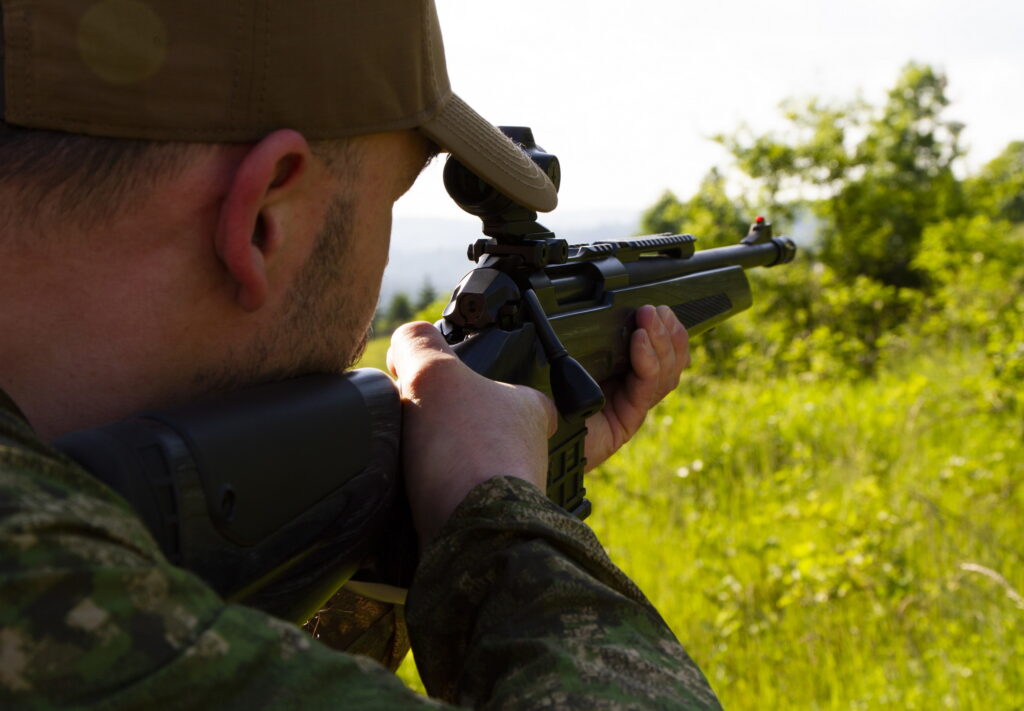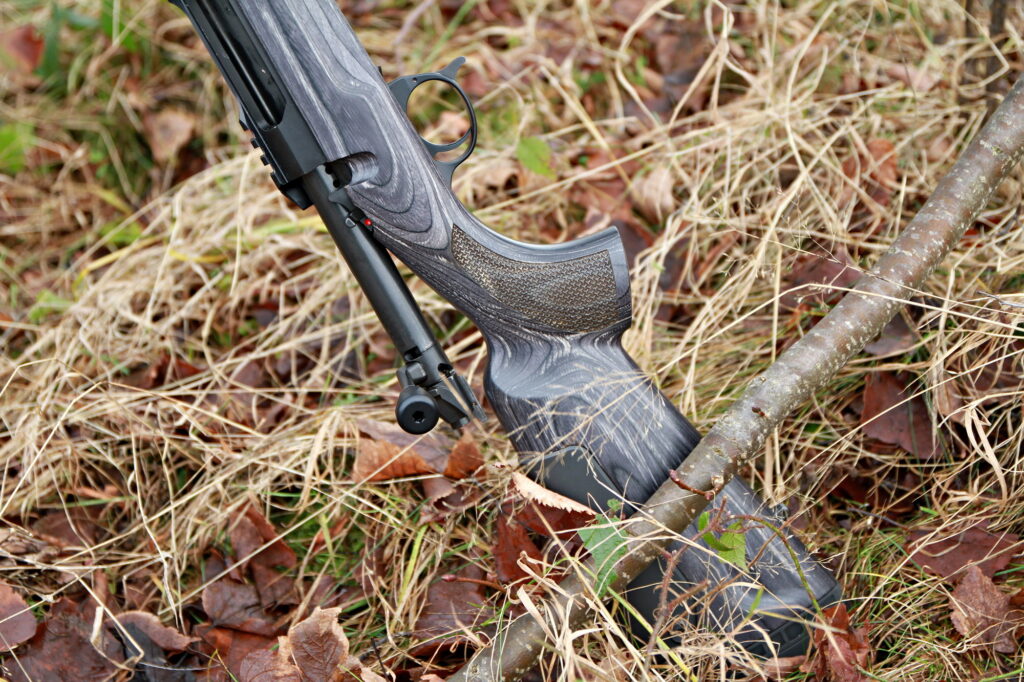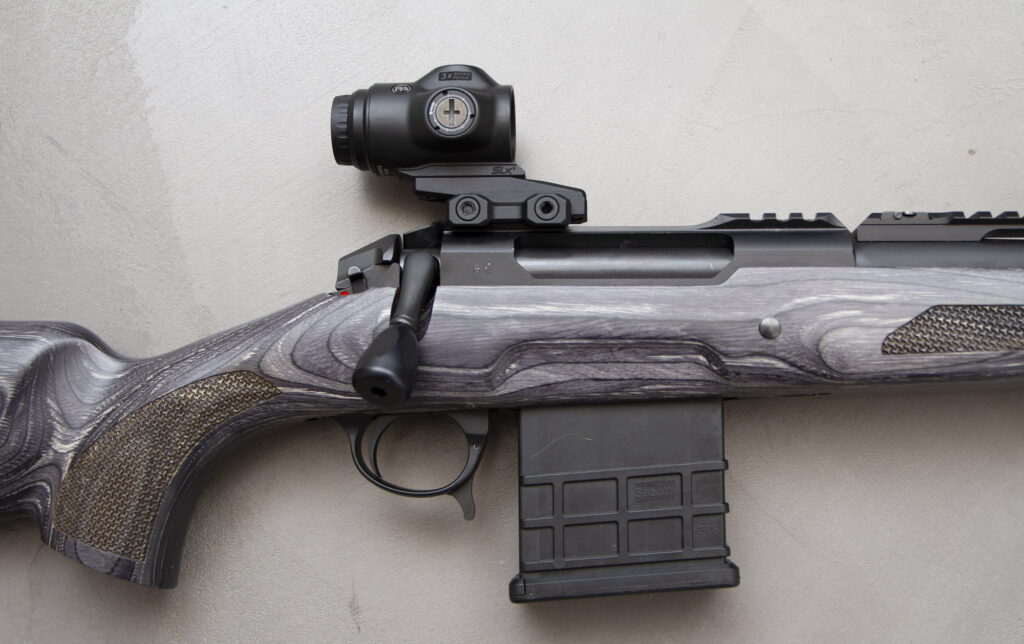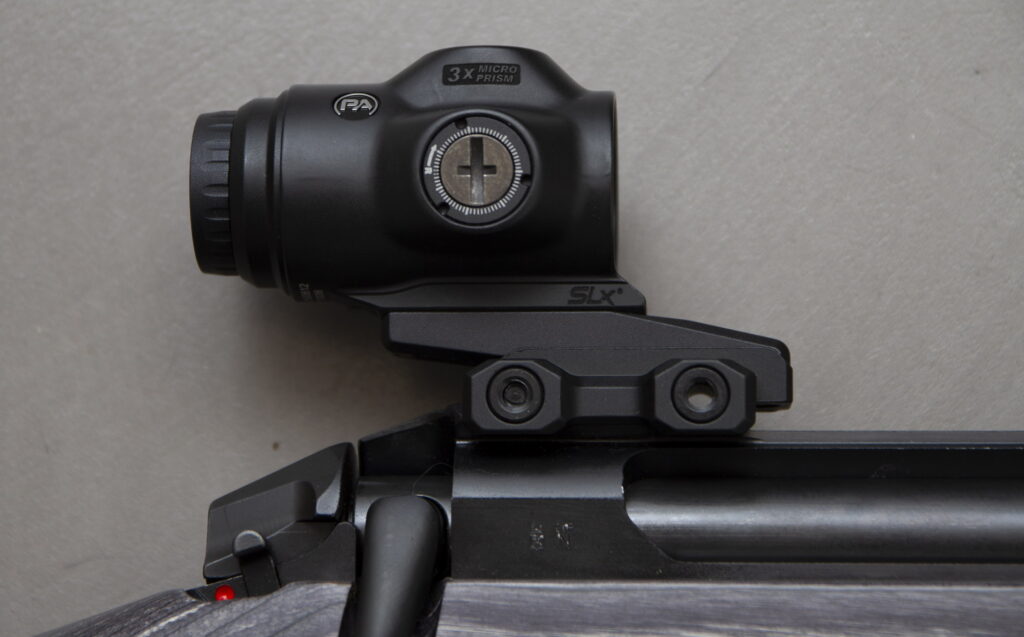Scout rifle
A scout rifle is a conceptual class that is supposed to be a shooter’s dream – one rifle serving as a general-purpose longarm for a common user.
It needs to be stressed at the start, that it is an idea of a weapon for an average, a common user – Armed Citizen, and not a specialist service member for whom the weapon is a tool and part of daily work.
The Scout rifle is expected to perform well in three basic tasks: as a weapon for hunting to acquire food, for defending the homestead against intrusions (especially, but not exclusively, for individuals living in rural areas), and in case of necessity (heaven forbid!) to organize a militia movement or, as some prefer, an uprising or insurgency (a revolt against an external enemy or a homegrown tyrant).
I will describe the principles of the Cooper Scout rifle below and try to relate them to the Rover Scout version of Sabatti rifle. The rifle itself has been described in more detail in the article Multipurpose Sabatti Scout.
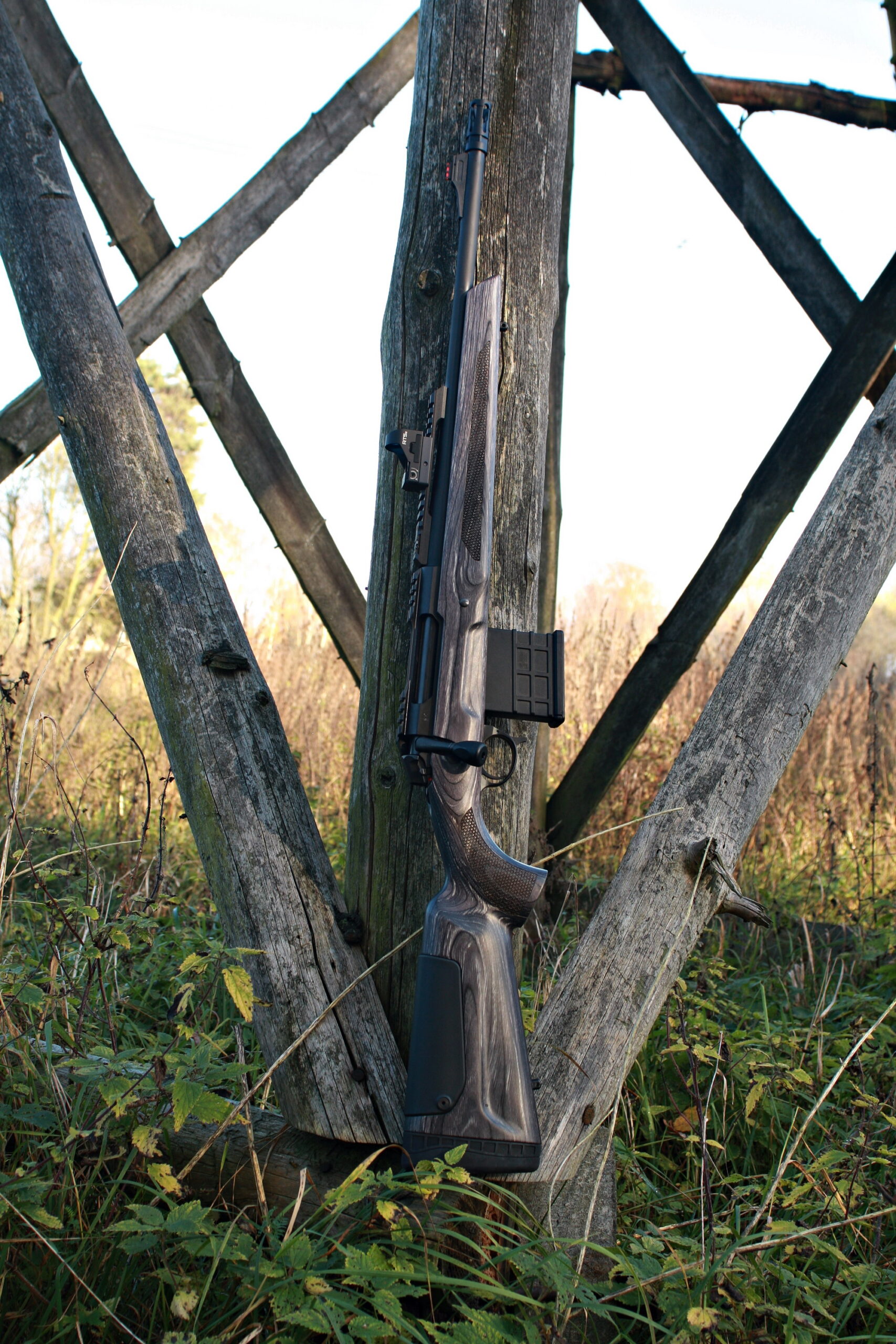 The Sabatti Rover with a laminated stock camouflages perfectly
The Sabatti Rover with a laminated stock camouflages perfectly
First, the ammo
First and foremost, it should be a cartridge that is as widely available as possible – therefore, a military cartridge. Specialized hunting calibers should be excluded due to their cost, often poorer availability, and the costs associated with firearms adapted to them.
It cannot be a cartridge that is too weak – it should serve not only for eliminating threats from humans but also for hunting. Game animals are typically much more resilient to gunfire than humans. Therefore, the most popular military caliber, 5.56×45 mm, does not meet these requirements. On the other hand, powerful calibers like .30-06 should be excluded due to the shooter’s comfort when firing. The Scout rifle is meant to serve everyone, not just strongly built men.
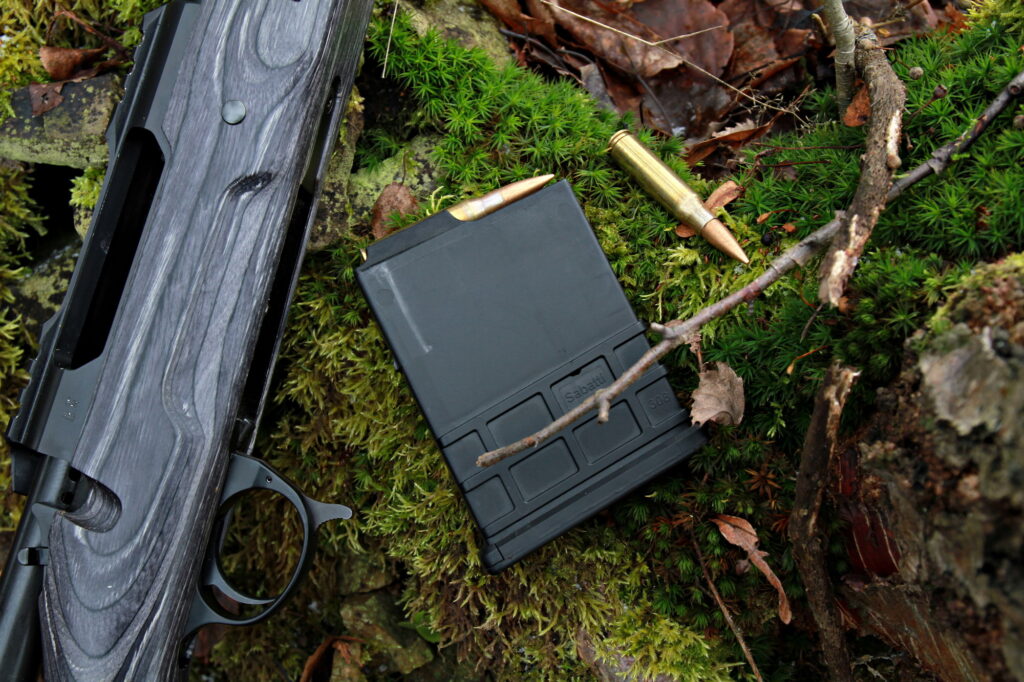 The .308 Win is a great compromise between shooting comfort and energy. We can still shoot quickly and accurately, while the energy carried by the bullet to the target is not excessive for small game
The .308 Win is a great compromise between shooting comfort and energy. We can still shoot quickly and accurately, while the energy carried by the bullet to the target is not excessive for small game
As a compromise, Cooper chose the 7.62x51mm (civilian equivalent: .308 Win). A cartridge in this caliber can definitely be used without any problems for shooting at any European, as well as South and North American game. It will also perform well in the wild areas of Russia. It is only too weak – and this should be emphasized – for hunting certain African species. However, the scout rifle is not intended for Big Five game hunting.
On the other hand, the impact of the firearm on the shooter when using .308 Win ammunition is relatively gentle. So much so that anyone can handle a weapon in this caliber, and almost everyone is capable of shooting it quickly, delivering successive shots effectively and accurately.
The variant of the bolt-action Sabatti, which I have in my hands, is of course in the .308 Win caliber. By design, this specimen was intended to partially fulfill the role of a Cooper rifle – in the hunting ground as a universal weapon for large game commonly found in Poland and neighboring countries. I never intend to hunt the Big Five for ideological reasons.
Bolt-action or semi-automatic? Light or heavy? What trigger?
Another issue is the operation mode of a universal firearm. According to Cooper’s concept, a bolt-action rifle with a rotating bolt is the ideal option, but he also didn’t exclude semi-automatic firearms if a particular model fulfilled other criteria.
The safety – speaking of a bolt-action rifle – should be three-position: unlocked, locked with the ability to operate the bolt, locked without the ability to operate the bolt. The firearm’s safety itself should occur by disconnecting the trigger mechanism, not by locking it.
The trigger mechanism itself should be triggered with a force not greater than 1400 grams.
Weapon weight. This is the bottleneck for the ideal firearm according to Cooper. 3 kilograms as the optimal value, 3.5 kilograms as the maximum, each time measured with the magazine, optics, and carrying strap. This limitation goes hand in hand with the next ones – the length of the firearm must not exceed 100 centimeters, and the stock should be as light as possible – preferably made of synthetic material.
Here, our Sabatti partially meets Cooper’s criteria. A great single-stage trigger weighing around 1200 grams allows for very comfortable shooting. The manufacturer also offers triggers with even lower weights and two-stage triggers. Personally, I believe that for firearms with utility characteristics – which a universal rifle is supposed to have – a trigger that is too delicate would be more of a drawback than an advantage. It’s entirely different in precision rifles – sniper or sports rifles. There, every gram and every tenth of a millimeter of trigger travel matters. In the hunting ground, I prefer to have the assurance that in case of my mishap (fall, stumble) and simultaneous malfunction of the safety (or failure to secure the weapon), there won’t be a shot fired upon the gun hitting the ground.
Weight. Here, there might be an issue with meeting Cooper’s criterion. The Sabatti I have, with a loaded magazine and without optics, weighs 3100 grams. With an empty magazine and optics, it may or may not fit within or nearly fit within the maximum assumed weight. The currently produced Rover Scout weighs only 2800 grams according to the manufacturer’s data, making meeting the weight restriction easier. We should look at the matter reasonably, however. These 200-300 grams pose a minor problem, and surprisingly, the additional weight can actually help shooters of smaller stature handle the recoil.
Sights
The Scout rifle should be equipped with two sets of sights. The first, commonly known as backup sights, should take the form of a ghost ring aperture. This alternative to the traditional notch sight greatly facilitates and speeds up shooting, especially at shorter distances.
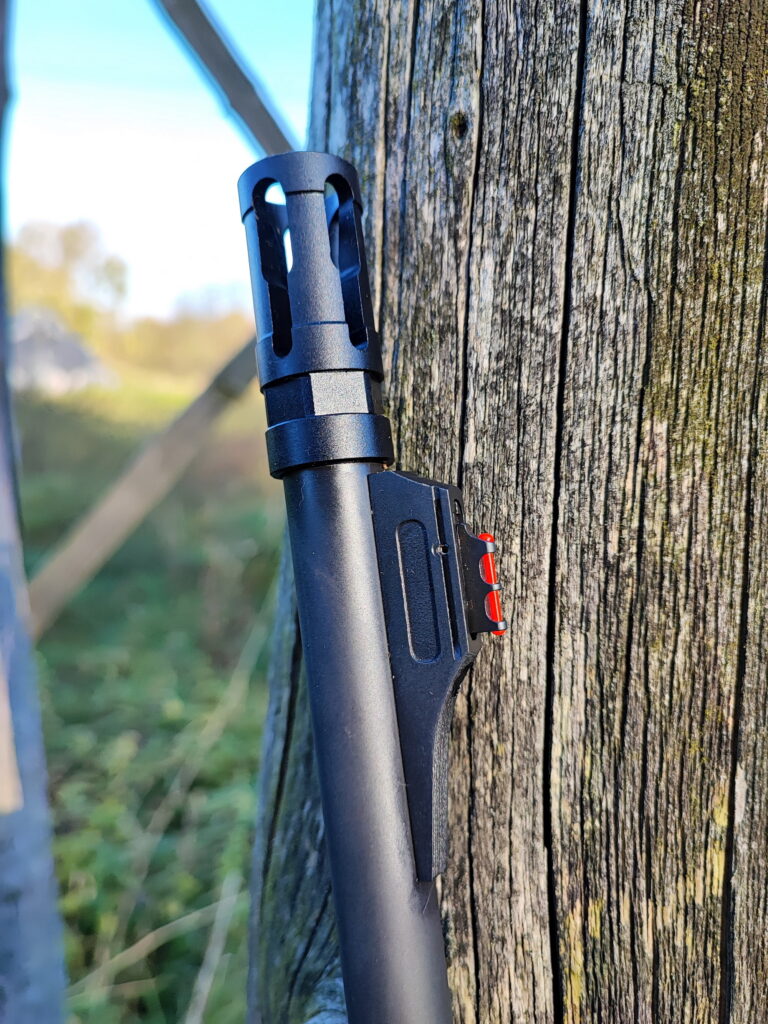 Fiber optic sights definitely facilitate aiming in poor lighting conditions. However, it must be remembered that fiber optics are quite delicate…
Fiber optic sights definitely facilitate aiming in poor lighting conditions. However, it must be remembered that fiber optics are quite delicate…
The second – primary – aiming method is a scope with relatively low magnification. According to Cooper’s concept, this magnification was supposed to be 2-3x. Over 40 years after the first formulation of the scout rifle concept, knowing how optical sighting devices have evolved, I dare say that Cooper would probably modify this limitation slightly. However, according to the original concept, such a limitation existed and was connected with the second – the scope should be mounted in a way that there is nothing above the ejection port of the rifle. Therefore, we mount the optic far forward.
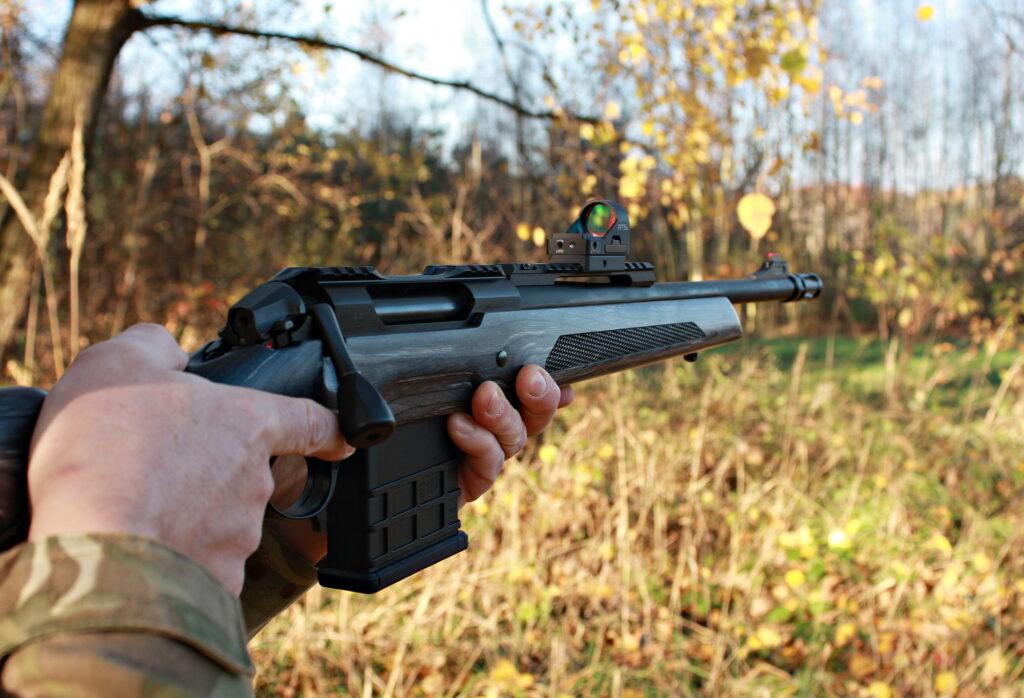 Mounting optics so far forward is definitely not for me. However, there will certainly be supporters of such a technique. And they will likely argue well why they want to shoot this way. Unfortunately for me, their arguments will be decidedly logical.
Mounting optics so far forward is definitely not for me. However, there will certainly be supporters of such a technique. And they will likely argue well why they want to shoot this way. Unfortunately for me, their arguments will be decidedly logical.
Why? Well, because in the 1980s, detachable magazines in bolt-action rifles were not as common as they are today, and Cooper assumed the possibility of easy reloading of the weapon, either individually or from stripper clips into a fixed magazine. He also assumed the possibility of conveniently loading ammunition directly into the chamber. While loading cartridges directly into the chamber can be comfortably done even with optics mounted in a traditional way, partially above the chamber, reloading from stripper clips is out of the question in such a case.
On the Sabatti rifle, I can mount optics both traditionally and far forward, simultaneously exposing the ejection port. Additionally, there is the option to detach the front rail, the one on the barrel. In that case, we return to the classic position for mounting optics, saving 100-200 grams in the weight of the weapon. However, by removing the front rail, we lose the mechanical sights, which contradicts both common sense and Cooper’s intention for a universal rifle. The mechanical sights themselves, although correct, do not include an aperture. Replacing the sights with ghost ring sights would be structurally problematic.
Classical solution remains better than overcomplication
During Cooper’s time low power variable optics (LPVOs), now quite popular, were almost nonexistent. Nobody had heard of ultrashort (and therefore very light) prism sights, now widely available, either.
I don’t like optics (excluding red dot sights) mounted far from the eye. Therefore, I either disregard Cooper’s criterion or treat it as, at best, an eccentric idea. Modern technology allows me to mount a relatively light, weighing about 500 grams, scope with a magnification range of 1-8x or even 1-10x. Such a sight is certainly not heavier than scopes with fixed 2x or 3x magnification that were contemporary to Cooper, and gives me much greater capabilities, especially in target recognition.
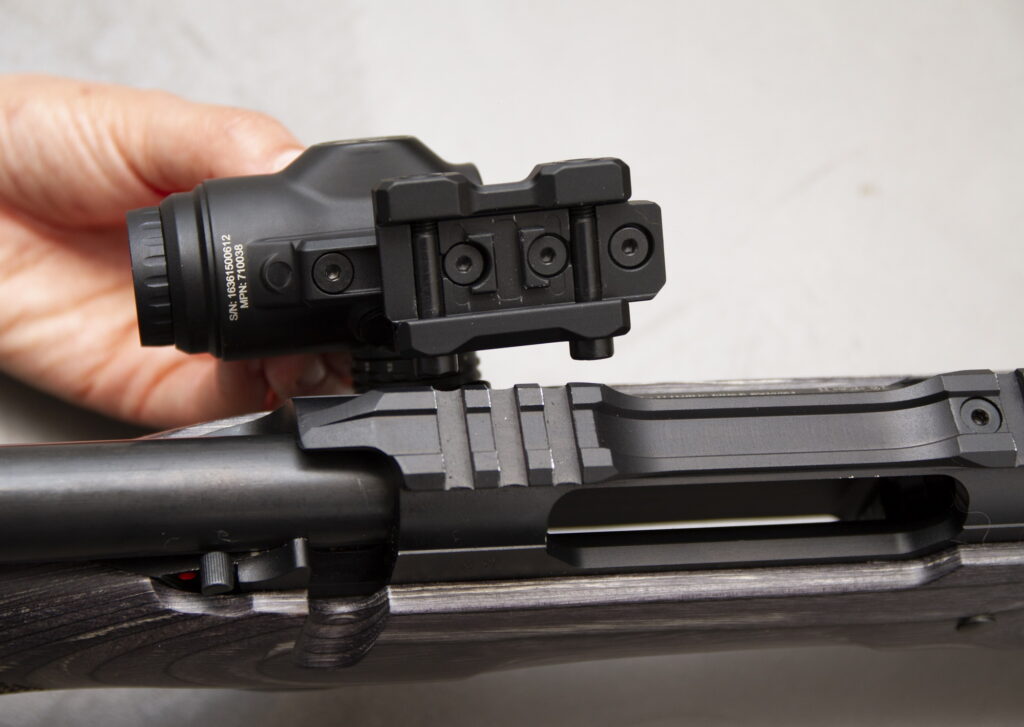 Upon closer inspection, an attentive observer will notice that the Primary Arms prism sight is mounted on a single screw. This is not a mistake or oversight. Simply put, the mounting rail – as seen in the third photo in this set – on the Sabatti rifle has decorative, flowing ends milled above the ejection port, making proper optic mounting impossible. It’s a minor problem. Any decent gunsmith or machinist can easily mill the rail to make it even without any harm to the firearm, should the owner decide to mount a lightweight prism scope
Upon closer inspection, an attentive observer will notice that the Primary Arms prism sight is mounted on a single screw. This is not a mistake or oversight. Simply put, the mounting rail – as seen in the third photo in this set – on the Sabatti rifle has decorative, flowing ends milled above the ejection port, making proper optic mounting impossible. It’s a minor problem. Any decent gunsmith or machinist can easily mill the rail to make it even without any harm to the firearm, should the owner decide to mount a lightweight prism scope
This is of enormous importance both in hunting and in the possible fight against human threats.
As if that weren’t enough, I can mount a prism sight (approximately 200-250 g) with a fixed magnification of 3x on my scout rifle. Installing such a device allows me to simultaneously reduce the weight of the firearm and free the ejection port from the optic while maintaining a reasonable eye relief. An additional positive aspect is that I mount the prism relatively far back on the rifle (above the trigger), so the center of gravity doesn’t shift too far forward. However, the low magnification is a bit of a drawback… unless we plan to use the firearm at distances below 150 m while simultaneously using binoculars or a monocular for target identification. Remember that in hunting applications, having binoculars in the field is required.
Magazine, belt, bipod....
Due to the popularity and further weight reduction, use of weapons with fixed magazines was primarily assumed by Cooper. Hence the previously described need to move the optics away from the ejection port.
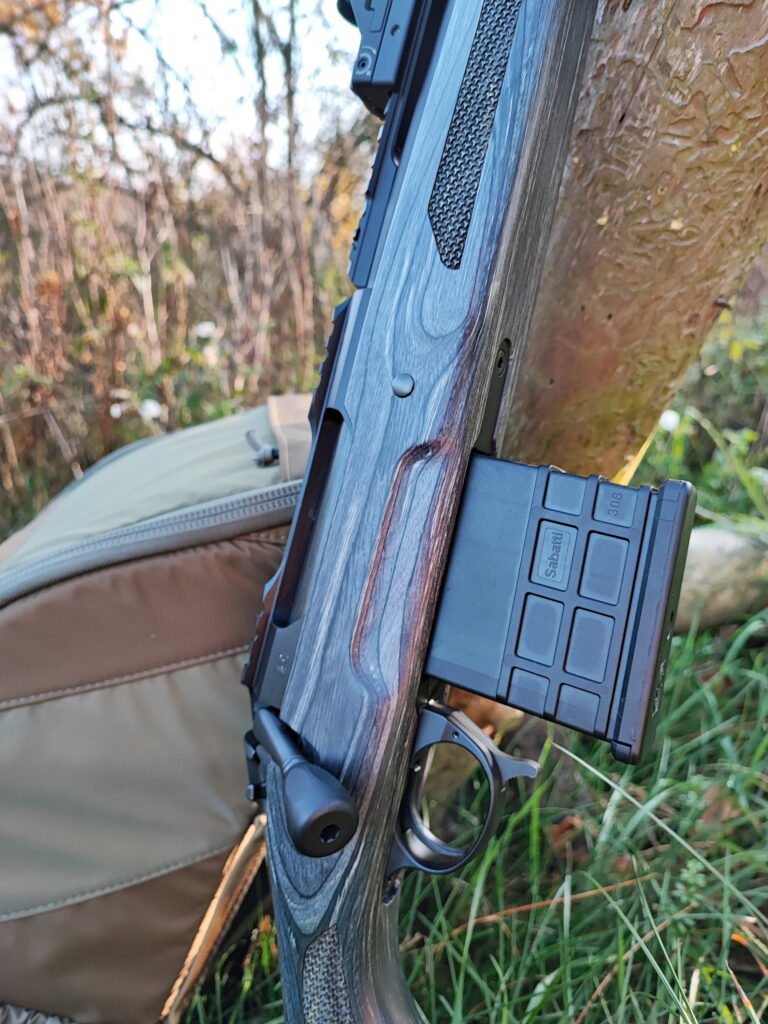 Sabatti’s brand magazine, but compatible with AICS products (and their copies)
Sabatti’s brand magazine, but compatible with AICS products (and their copies)
On the occasion of the detachable magazine, Cooper proposed a kind of dual-action latch – a two-position latch. In the first position, when the magazine is attached to the firearm, it is positioned too low to extract ammunition from it. In this case, the shooter loads ammunition individually into the chamber. Only when the magazine is fully inserted into the socket is its proper functioning enabled. A similar function is usually performed by the safety in firearms with a fixed magazine. This was commonly used in military firearms during the First and (less frequently) Second World War to enforce firing discipline among soldiers.
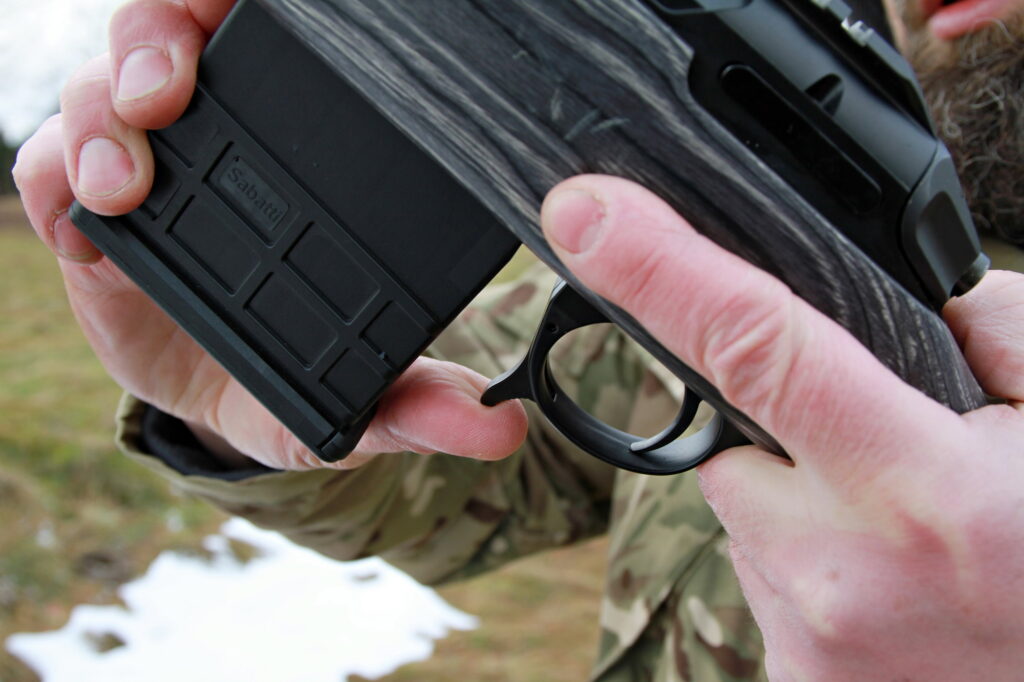 The magazine release lever is a fly in the ointment for the Italian three-hundred-eight. I can’t get used to this solution in any way.
The magazine release lever is a fly in the ointment for the Italian three-hundred-eight. I can’t get used to this solution in any way.
The final component of the scout rifle is the sling. It is intended to serve a dual purpose: firstly, to facilitate carrying the firearm, and secondly – though most shooters and modern shooting schools move away from it – to enable accurate shooting while being carried.
How is this function achieved? Well, usage of a three-point sling or a special two-point sling with a loop is advised. Both serve the same purpose – they provide an additional point of stability for the firearm, connecting it to the shooter’s body. A significant portion of tactical shooters mock the use of a carrying sling for shooting. However, it’s good to break this stereotype and despite the sarcastic smiles, try shooting with a supporting hand stiffened with a strap, and the results won’t take long to show. In the absence of a bipod or while being in a position that prevents its use, stabilizing the firearm with the sling becomes essential. And thus, the shot groups start to come together.
Speaking of bipods, Colonel had a wish for his universal rifle to have a bipod integrated into the stock if remotely possible – preferably in such a way that when folded, it wouldn’t break the weapon’s profile, protrude, or cause any interference. There are few rifles that meet that expectation. Models from two manufacturers – Sig and KelTec – are relatively popular. While the Sig rifle was created under Cooper’s supervision, the firearm from KelTec has nothing in common with the scout rifle idea except for the bipod being an integral part of the handguard.
Is it or isn't it...?
It’s difficult to ascertain what Colonel Cooper would say about Sabatti and this attempt to implement his idea. He would probably appreciate some elements while criticizing others.
We won’t know or verify that. In any case, in my humble opinion, the Sabatti Rover Scout will excellently fulfill the role of a universal household rifle, especially in .308 Win caliber. Ignoring legal aspects, because in Poland – ruled for over 80 years by Comrades fearing the Citizens like the devil (oops…!) fears holy water – even a toothpick is considered a dangerous weapon, a rifle like the Sabatti Scout should hang in every rural home hallway on a peg. Ready for use. Especially in the geopolitical situation we have beyond our border.
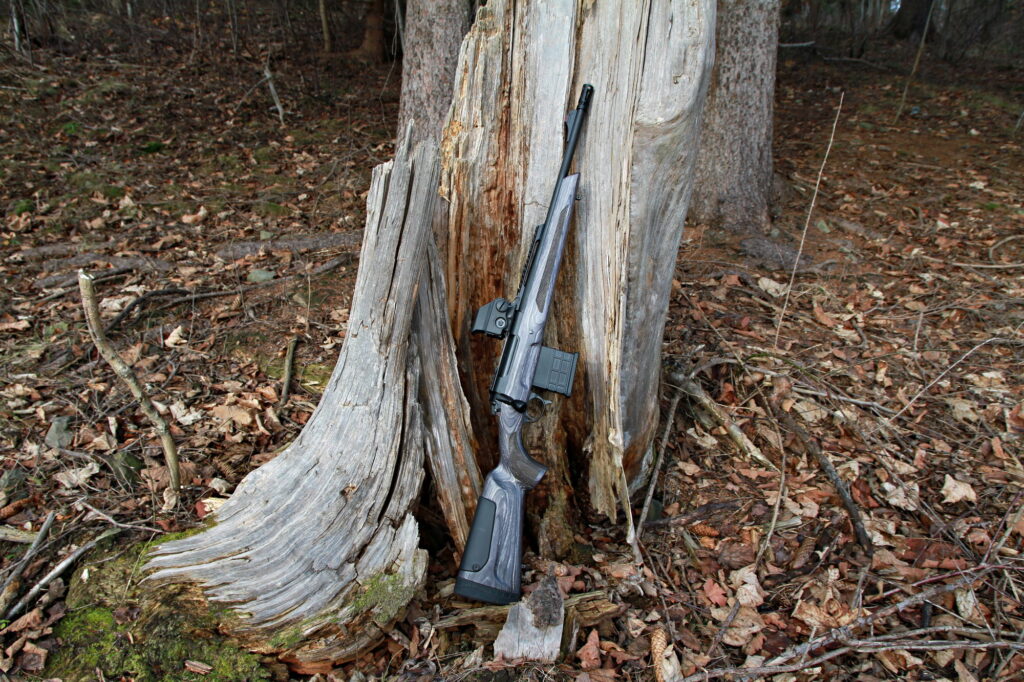 Light and handy – rifle for everyone
Light and handy – rifle for everyone
I would even say that there should be more than one. And that it should often be taken to the shooting range to tame it and befriend.
Advertisement: Sabatti products are distributed in Poland by Malik&Malik.
This article contains product placement: Primary Arms SLx 3x Micro Prism iR Red ACSS Raptor 5.56/.308 Meter.





